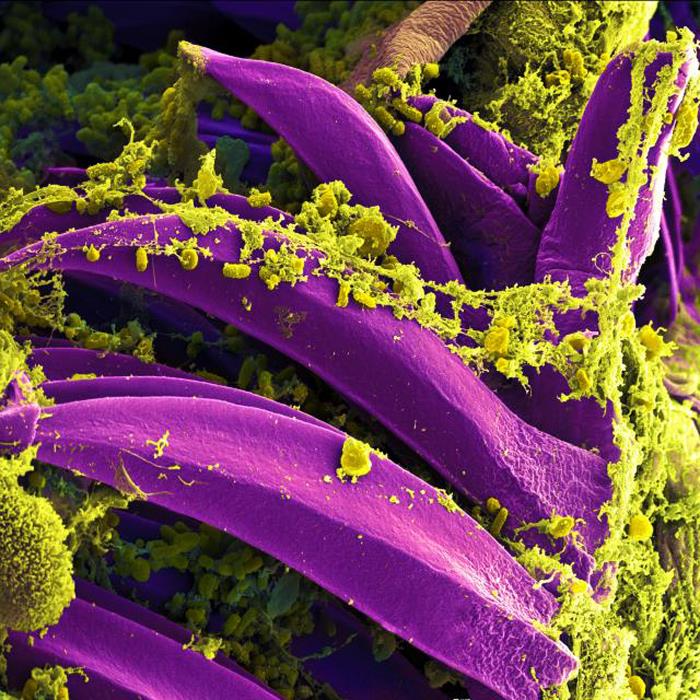The protection of human and animal health can only be achieved through the active cooperation of experts in the field of control and research in the human and veterinary field. The report on zoonoses, foodborne diseases and waterborne diseases in the Slovak Republic for 2020 contains data from official inspections carried out in the field of agriculture and health care, as well as from research institutes and universities. The preparation of the report was coordinated by the National Contact Point for Scientific and Technical Cooperation with the European Food Safety Authority (EFSA EFSA), which is established at the Department of Food Safety and Nutrition of the Ministry of Agriculture and Rural Development of the Slovak Republic (MPRV SR).
The report serves as a basis for the EFSA NCB and scientific experts to set priorities and own national food safety risk assessments. At the same time, the report serves as one of the bases for the Community risk assessment carried out by the European Food Safety Authority (EFSA). Scientific risk assessment is the basis for risk management. The report describes the situation in 35 zoonotic agents, 5 foodborne diseases (ie foodborne diseases) without zoonotic potential and 4 waterborne pathogens. Of the 44 agents monitored, 23 are bacterial, 10 parasitic, 10 viral and prion.
It presents the summary results of examinations and tests performed in 2020 in the Slovak Republic and the evaluation of the national epidemiological situation in humans and animals with a focus on trends and sources of zoonotic and foodborne diseases.
The report presents the summary results of examinations and tests carried out in 2020 and an assessment of the national epidemiological situation in humans and animals , focusing on trends and sources of zoonotic and foodborne diseases . The number of monitored authors, cooperating organizations and experts is growing every year. A wide team of more than 70 experts from 24 scientific and control organizations in the Slovak Republic took part in its elaboration .
In 2020, 17,067 human diseases caused by the study agents were reported, with 29.1% related to campylobacteriosis, 20.9% to Clostridium dificille and 20.4% to salmonellosis. Rotavirus 11.6%, Norwalk virus 5.1%, Borrelia burgdorferi sl 5.6% and Escherichia coli 1.2% also contributed to a higher percentage of diseases.
Seven of the study agents caused 380 human epidemics, of which 56.6% were salmonellosis, 23.2% were campylobacteriosis and 12.6% of epidemics were caused by rotavirus. Norwalk virus accounted for 5.5%, tick-borne encephalitis virus 1.3%, shigella and 0.5% and yersinia 0.3%.
35,957 food samples were examined for the presence of 15 pathogens with a positive finding in 2.2% of samples. Higher percentages of positive findings were in Yersinia spp. 48.1%, Enterococcus spp. 46.3% and Vibrio spp. 31.8%.
The presence of 30 pathogens was monitored in 2,483,239 samples originating from livestock and wild animals, pets and zoos taken as part of official control, preventive monitoring, research, as well as from sick or dead animals. Positive findings accounted for 0.1% of samples. Higher percentages of positive findings were recorded for Aeromonas spp. 59.3%, Clostridium spp. 55.4%, Francisella tularensis 50.4%, Babesia spp. 41.1%, Dirofilaria spp. 34.8%, Campylobacter spp. 18.3%, Yersinia spp. 18.3%, Staphylococcus aureus 18.1%, hepatitis E virus 14.1%, Listeria monocytogenes 11.8%, Toxocara spp. 10.5%.
Feed – 385 samples were examined for the presence of Salmonella spp. (1.5% positive samples), Escherichia coli (60.0% positive samples) and Clostridium spp.
(1.7% positive samples).
35,746 water samples were examined for the presence of 9 agents, of which 7.4% were positive, of which Legionella spp. 47.1% and Vibrio spp. 39.5%.
44,633 samples from the environment were examined for the presence of 8 pathogens, of which 2.3% were positive, of which Legionella spp. 36.0%, Vibrio spp. 6.8%, E.coli 3.6% and Enterococcus spp. 2.6%.
The report also includes the results of examinations for the resistance of microorganisms to antimicrobials, which has a growing trend worldwide and poses a real danger in the treatment of infections. Microbial resistance was monitored in Salmonella spp., E. coli , Campylobacter spp., Staphylococcus aureus and Enterococcus spp.
The comprehensive report, which will be published as a publication, has a length of more than 130 pages, will be published in printed form, as a publication with an assigned ISBN. Summaries of individual chapters will be translated into English and published in an electronic version as a publication with an assigned ISBN.
See the appendices for more information.





